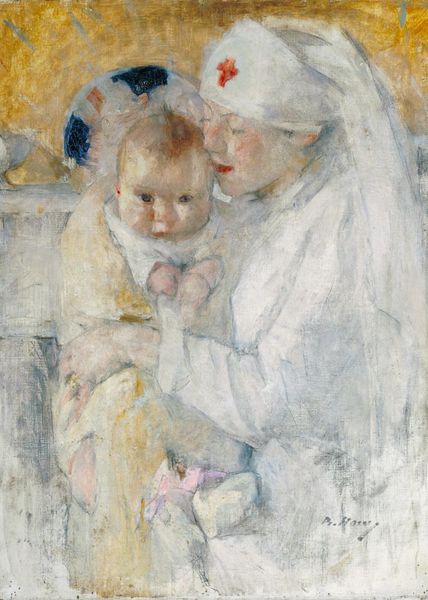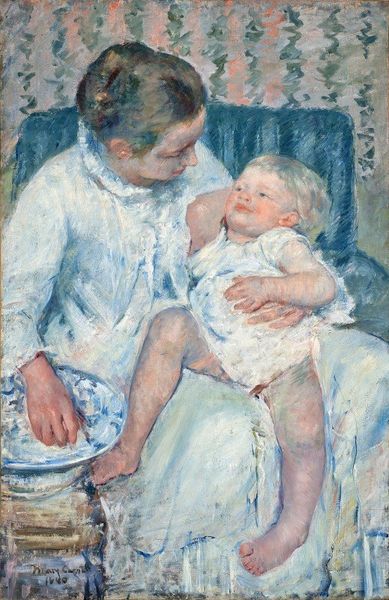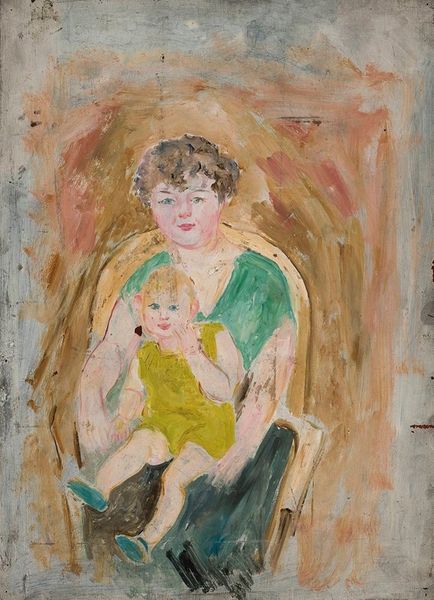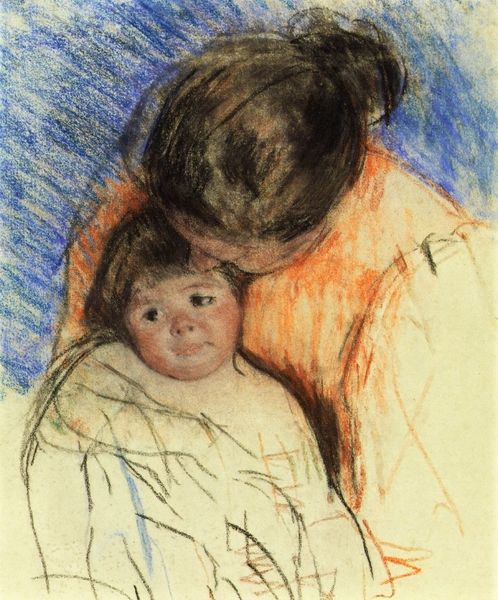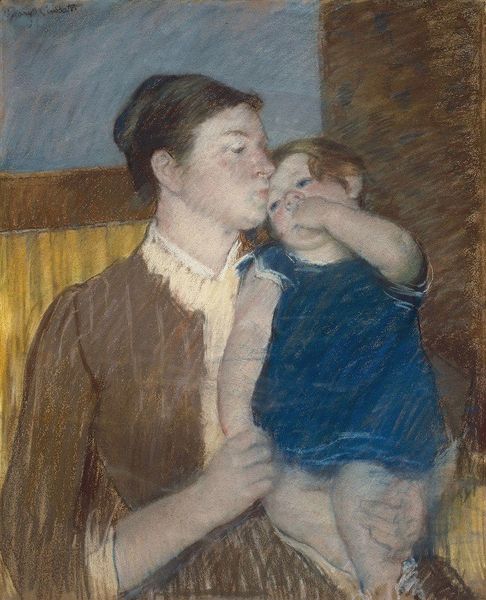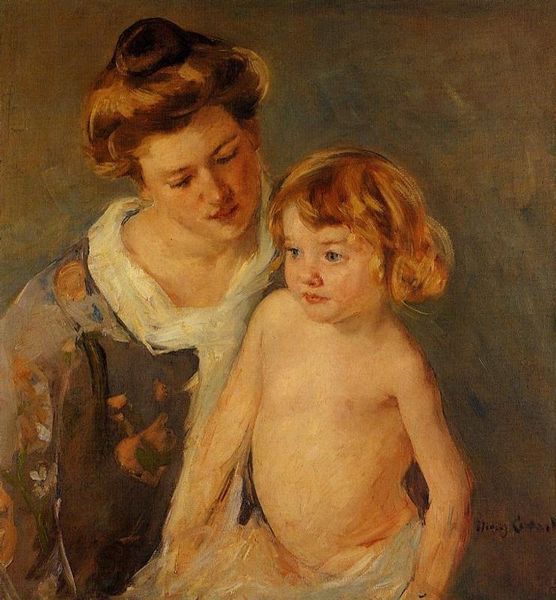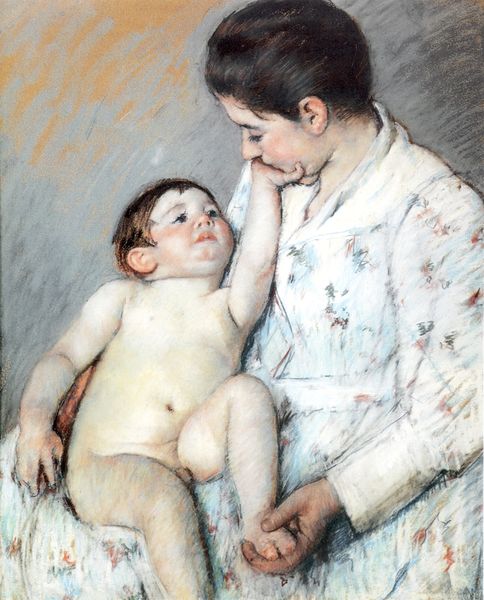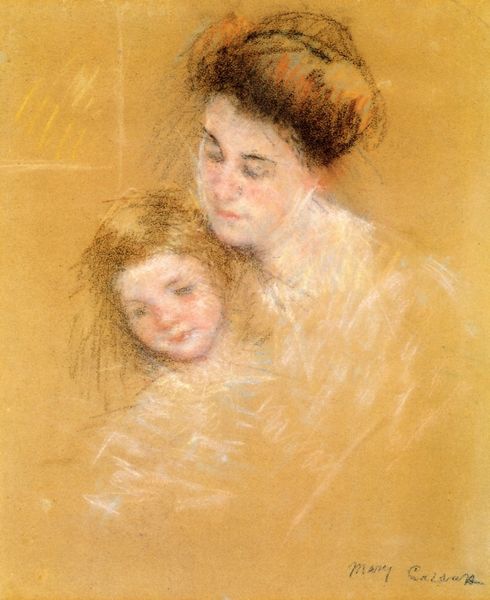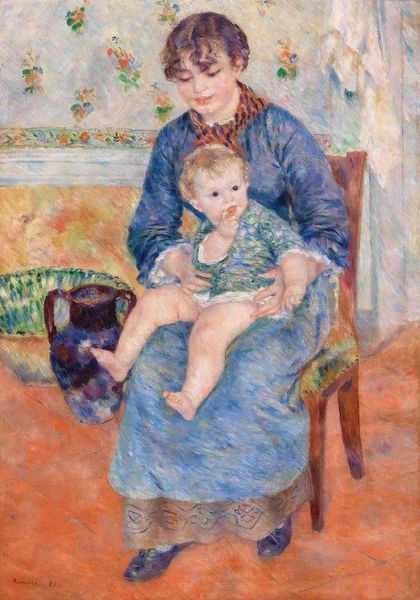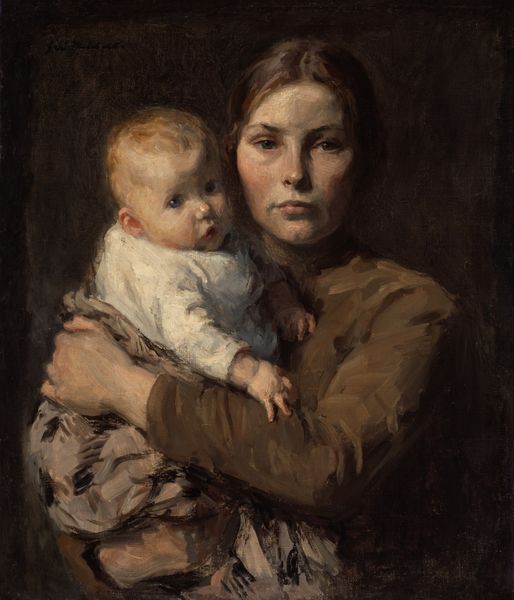
Copyright: Public Domain: Artvee
Curator: This painting is titled "Angelina Maria in the Arms of Her Nanny", by Max Liebermann, completed in 1916. It’s an oil on canvas depicting a nanny holding a young child. What are your first impressions? Editor: It strikes me as intimate, but also rather melancholic. There's a stark contrast between the innocence of the child and the somewhat world-weary expression of the nanny. Curator: That contrast is compelling. I see here the Madonna and child archetype, yet inverted by the artist. The halo of blond hair around the child's face emphasizes purity, while the nanny figure carries an unspoken history of her own. Editor: Interesting subversion, placing the social dynamic of childcare into a context of religious art is a pointed observation about gender and labor. What about the painter's approach here? It almost looks like an unfinished study. Curator: Liebermann's application of Impressionistic techniques, loose brushstrokes and attention to capturing light creates an intimate portrayal of modern life. This contributes to the emotional rawness that makes this artwork so compelling. In his work, this visual approach becomes symbolic for human frailty. Editor: Indeed. I think it also touches on the complexities of early 20th century German society. World War I raged in Europe. Looking at that child, the promise and fragility of new life is magnified. Do you believe there are any personal significances in this piece? Curator: The Liebermann family hired numerous nannies for their son. The subject carries significance beyond mere employment; here the nanny embodies nurture itself, linking her to an ancient, maternal archetypal. The role extends to the family’s safety, security, and even posterity. Editor: This piece underscores how paintings can hold multiple stories—the individual depicted, the artist's hand, the larger social conditions of its creation. It invites reflection on often-overlooked roles. Curator: Ultimately, this intimate domestic scene radiates a potent aura that transcends portraiture, suggesting something profoundly elemental and perpetually relevant about relationships and time.
Comments
No comments
Be the first to comment and join the conversation on the ultimate creative platform.

